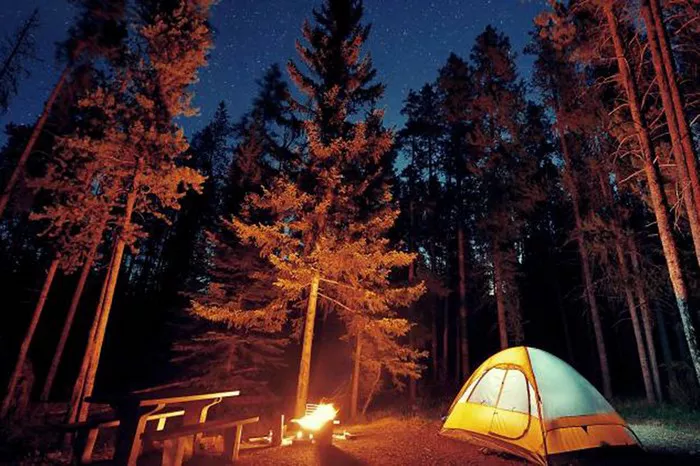Camping trips are a wonderful way to disconnect from the hustle and bustle of daily life and reconnect with nature. Whether you’re heading into the wilderness for a weekend getaway or embarking on a longer expedition, planning your meals is crucial, especially if you won’t have access to refrigeration. The challenge lies in selecting foods that are portable, non-perishable, and easy to prepare. With careful planning, you can ensure that your camping meals are not only satisfying but also safe to consume. Here’s a comprehensive guide to essential food items for camping without a fridge.
Planning Ahead
The key to successful camping meals without refrigeration is meticulous planning. Consider the duration of your trip, the number of campers, and the activities you’ll engage in. Remember, the goal is to pack lightweight, nutrient-rich foods that won’t spoil quickly. Here are some strategies to help you plan effectively:
1. Meal Preparation: Plan your meals in advance. Make a list of breakfasts, lunches, dinners, and snacks for each day you’ll be camping. Opt for meals that require minimal cooking time and ingredients.
2. Portion Control: Pre-portion ingredients to avoid carrying excess weight. Store items in resealable bags or containers for easy access.
3. Caloric Needs: Consider the energy demands of camping activities. Choose foods that provide sustained energy, such as complex carbohydrates and protein-rich options.
4. Packaging: Opt for lightweight, airtight packaging to minimize bulk and preserve freshness. Vacuum-sealed pouches and durable containers are ideal.
Essential Food Items
When selecting foods for your camping trip, prioritize non-perishable, shelf-stable items that can withstand varying temperatures. Here’s a breakdown of essential food categories to consider:
1. Grains and Carbohydrates
Instant Oats: Quick-cooking oats are versatile and can be prepared with hot water.
Rice or Quinoa: Pre-cooked rice or quinoa pouches are convenient and provide a good source of carbohydrates.
Pasta: Choose small pasta shapes that cook quickly, such as penne or shells.
Tortillas: Versatile and durable, tortillas can be used for wraps or toasted over a campfire.
2. Protein Sources
Canned Beans: Beans are an excellent source of protein and can be added to meals or enjoyed as a standalone dish.
Jerky: Beef, turkey, or plant-based jerky are lightweight and packed with protein.
Nut Butters: Peanut butter or almond butter are energy-dense spreads that pair well with bread or crackers.
Tuna or Salmon Pouches: These single-serve pouches are convenient and provide a quick protein boost.
3. Fruits and Vegetables
Dried Fruit: Apricots, raisins, and mango slices are nutritious and provide a natural energy boost.
Fresh Produce: Opt for sturdy options like apples, oranges, and carrots that can withstand outdoor conditions.
Powdered Drink Mixes: Packets of powdered juice or electrolyte mixes can be added to water for flavor and hydration.
4. Dairy and Dairy Alternatives
Powdered Milk or Non-Dairy Milk: Reconstitute powdered milk with water for use in coffee, oatmeal, or cooking.
Cheese: Hard cheeses like cheddar or parmesan can last several days without refrigeration.
5. Snacks and Condiments
Trail Mix: A mix of nuts, seeds, and dried fruit provides a satisfying snack.
Granola Bars: Choose bars with minimal ingredients and high nutritional value.
Hot Sauce or Mustard Packets: Single-serve condiment packets add flavor without the need for refrigeration.
Meal Ideas
With these essential food items, you can create a variety of satisfying meals while camping:
1. Breakfast: Instant oats with dried fruit and nuts, or scrambled eggs with canned beans and tortillas.
2. Lunch: Tortilla wraps with canned tuna and mixed greens, or pasta salad with canned vegetables.
3. Dinner: Rice pilaf with canned chicken and vegetables, or quinoa with beans and cheese.
4. Snacks: Trail mix, nut butter on crackers, or cheese and jerky.
Food Safety Tips
To ensure food safety while camping without refrigeration, follow these guidelines:
1. Storage: Keep food items in airtight containers or sealed bags to protect them from moisture and pests.
2. Temperature Control: Store perishable items in a cool, shaded area away from direct sunlight.
3. Hygiene: Wash hands before handling food and use clean utensils and surfaces for meal preparation.
4. Discard Perishables: If in doubt about the safety of a food item, discard it rather than risking foodborne illness.
Conclusion
Camping without a fridge requires thoughtful planning and consideration of food choices that are portable, shelf-stable, and nutrient-dense. By strategically packing essential food items and planning meals in advance, you can enjoy delicious and satisfying camping meals while minimizing the risk of food spoilage. Remember to prioritize food safety practices and enjoy the simplicity of cooking and dining in the great outdoors. Happy camping!

